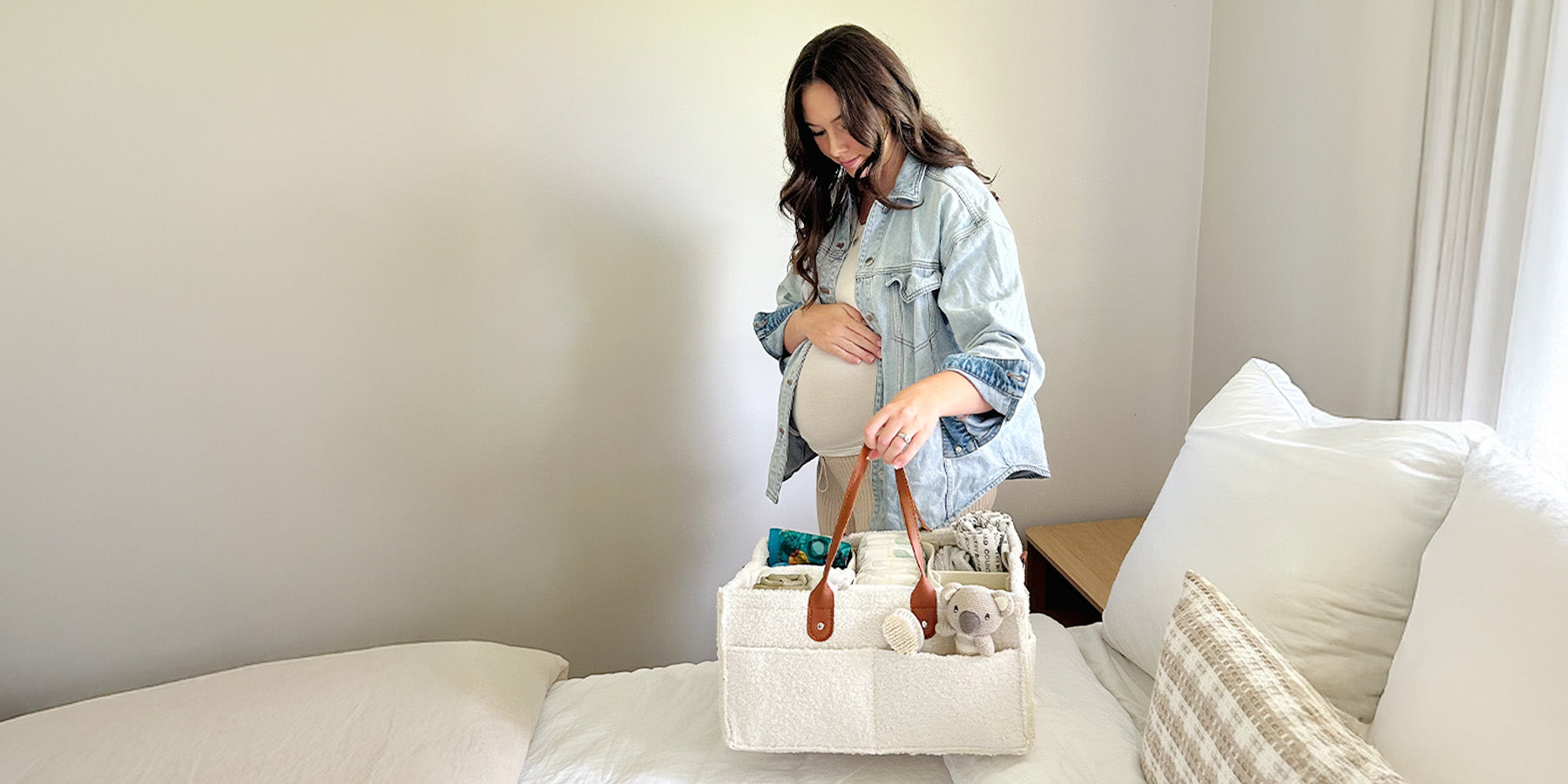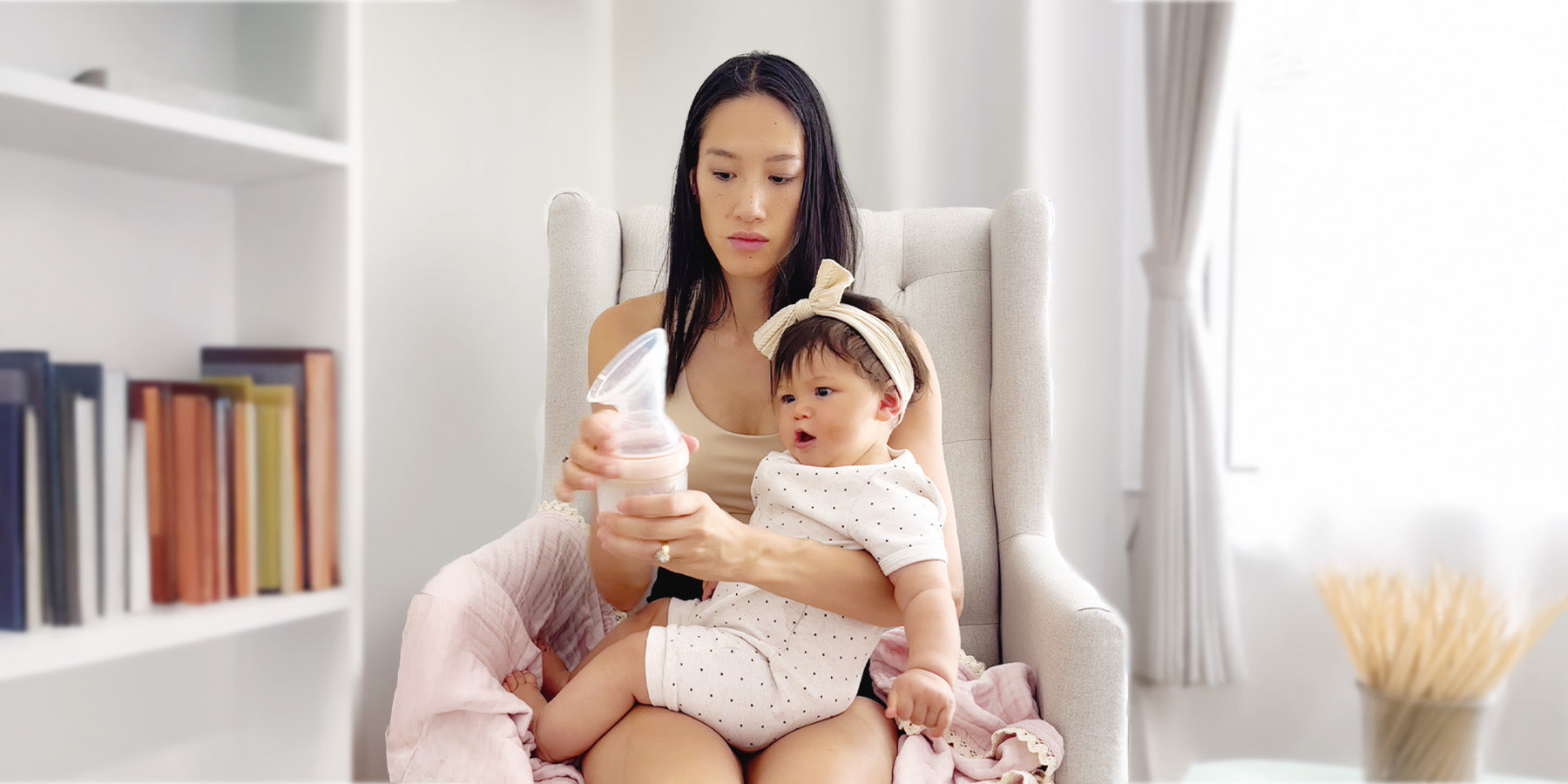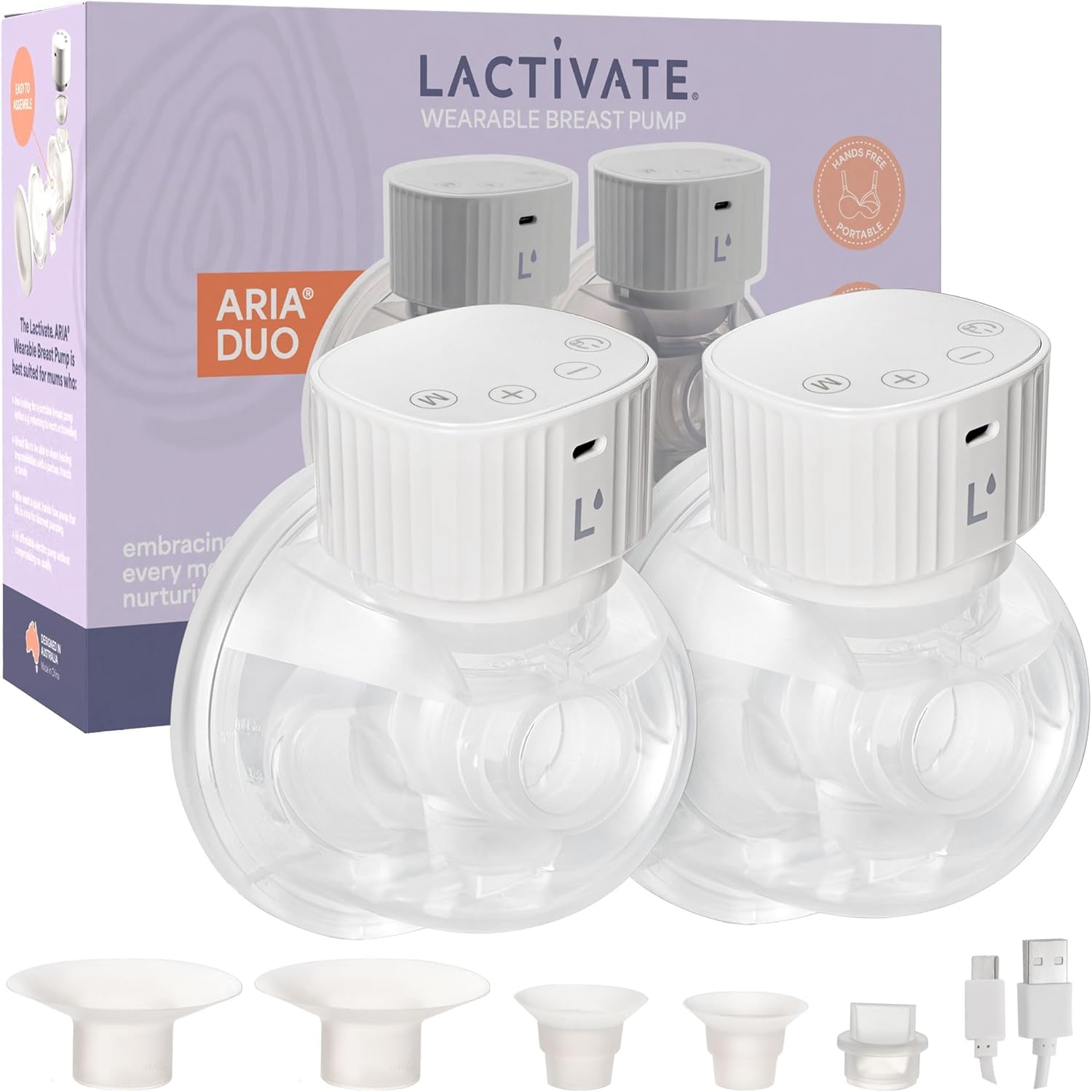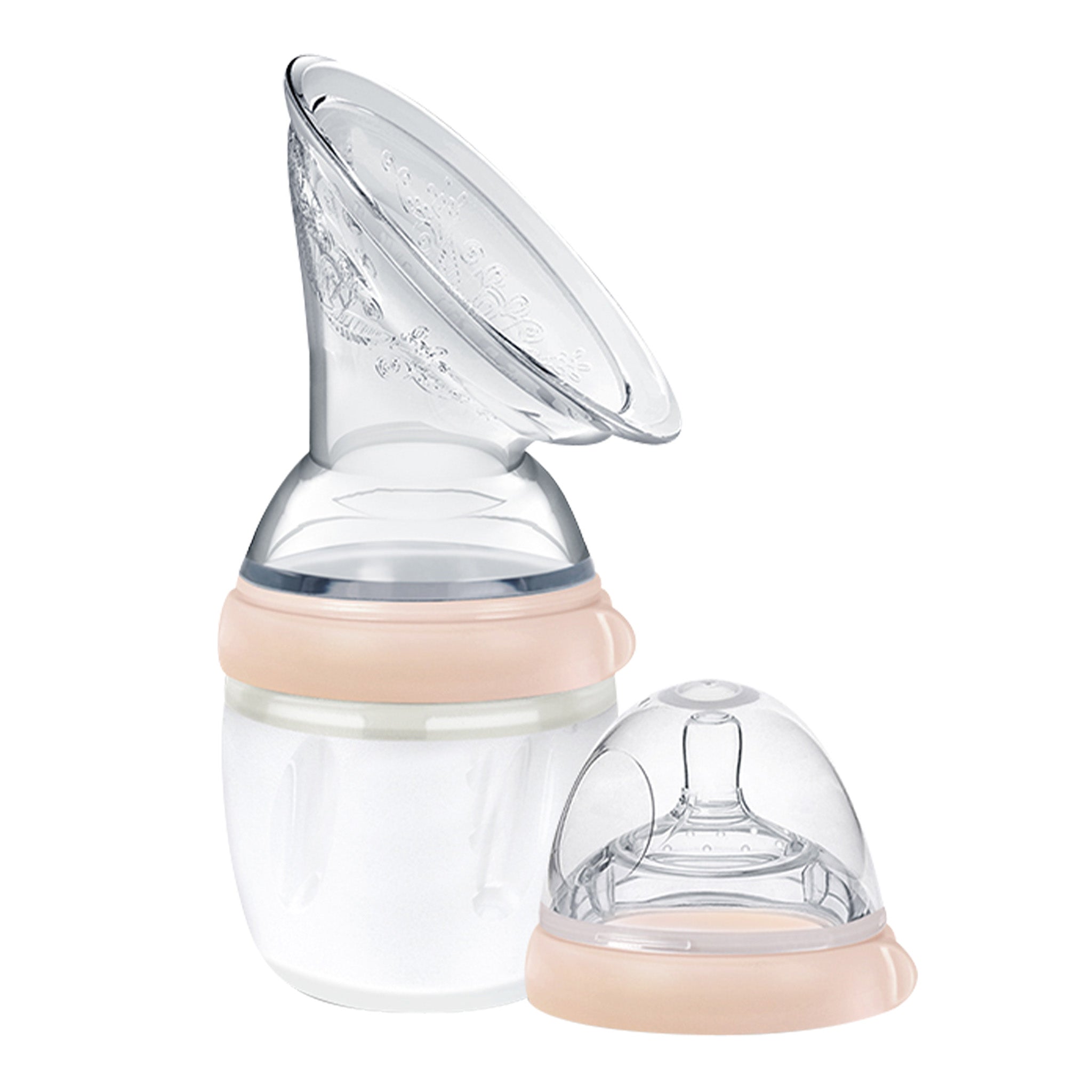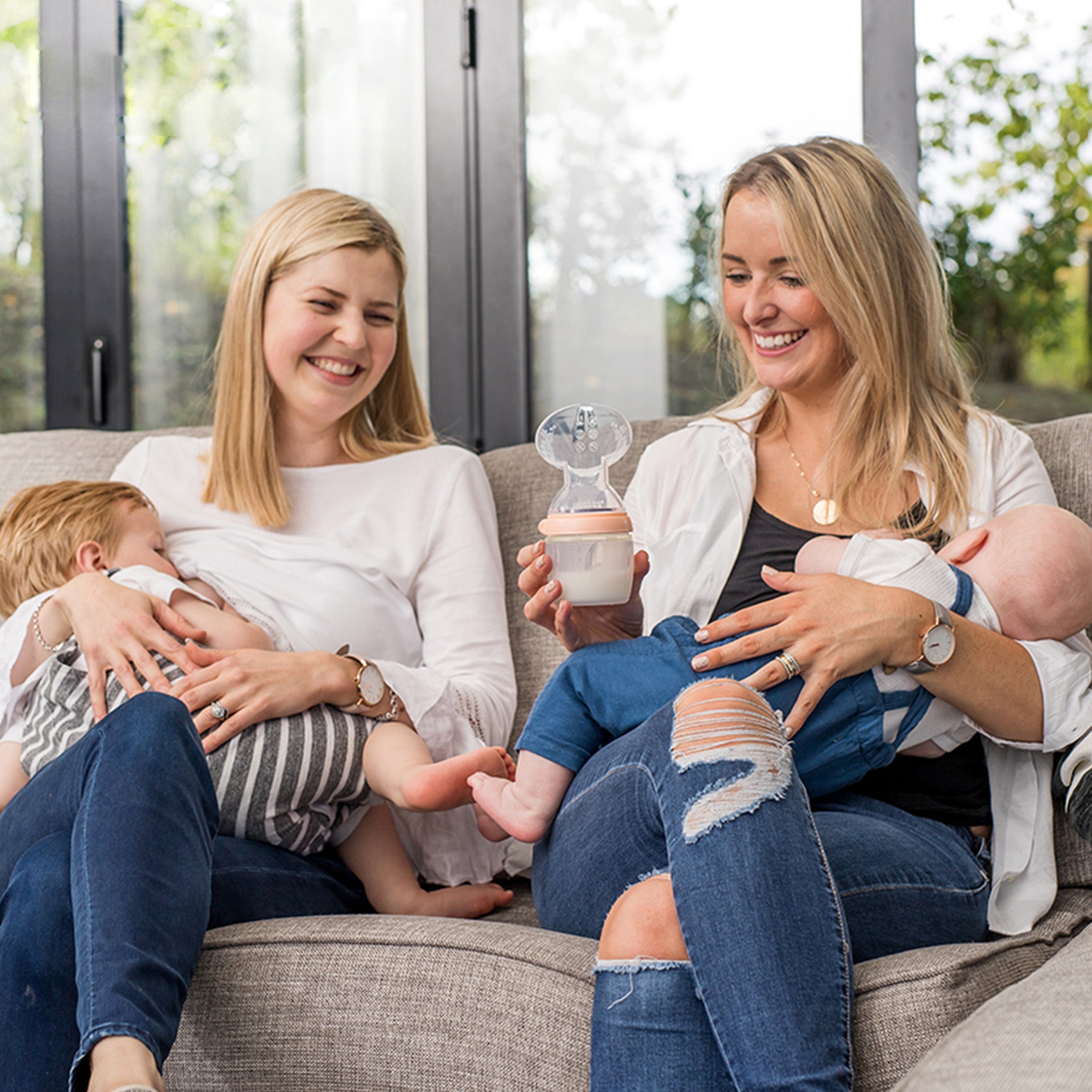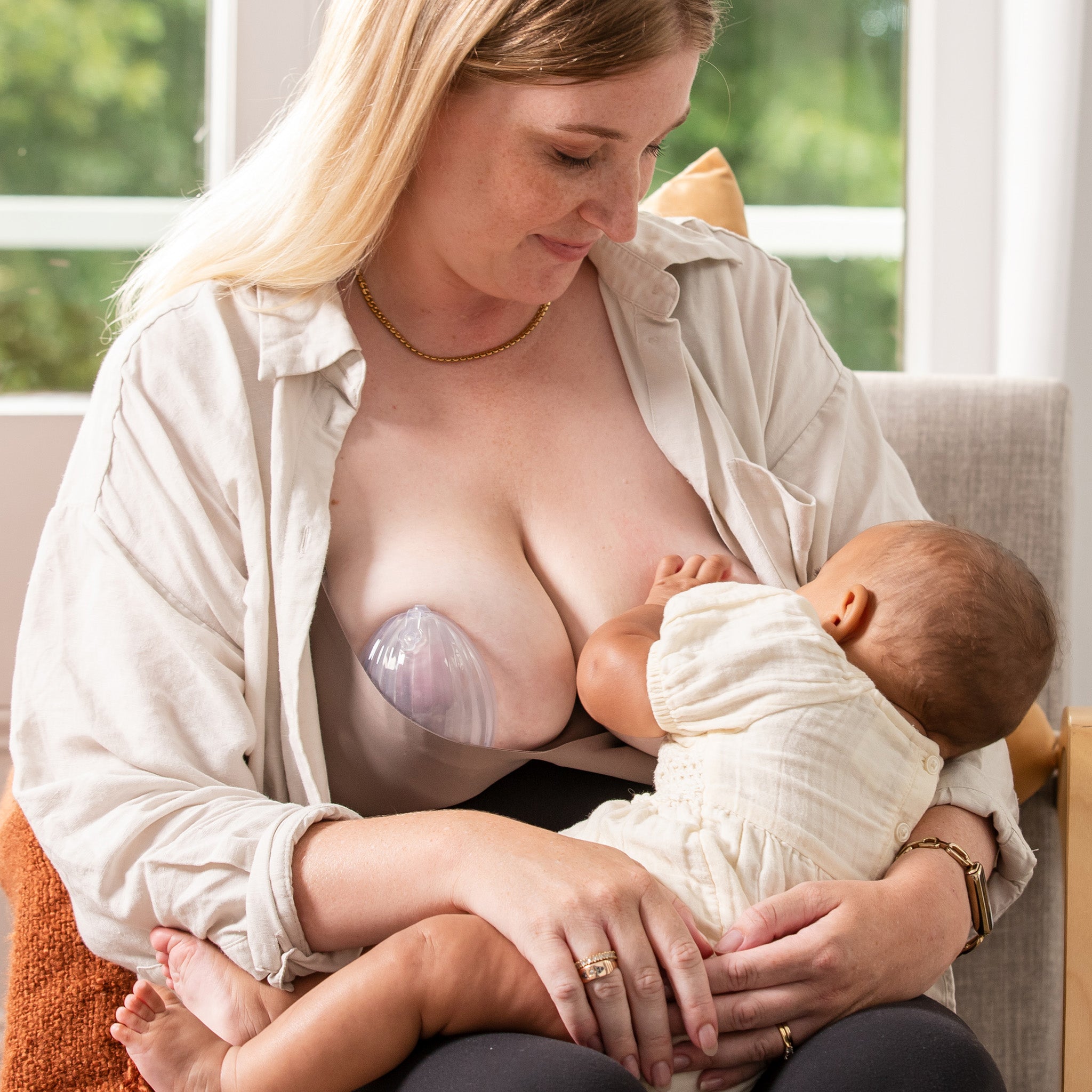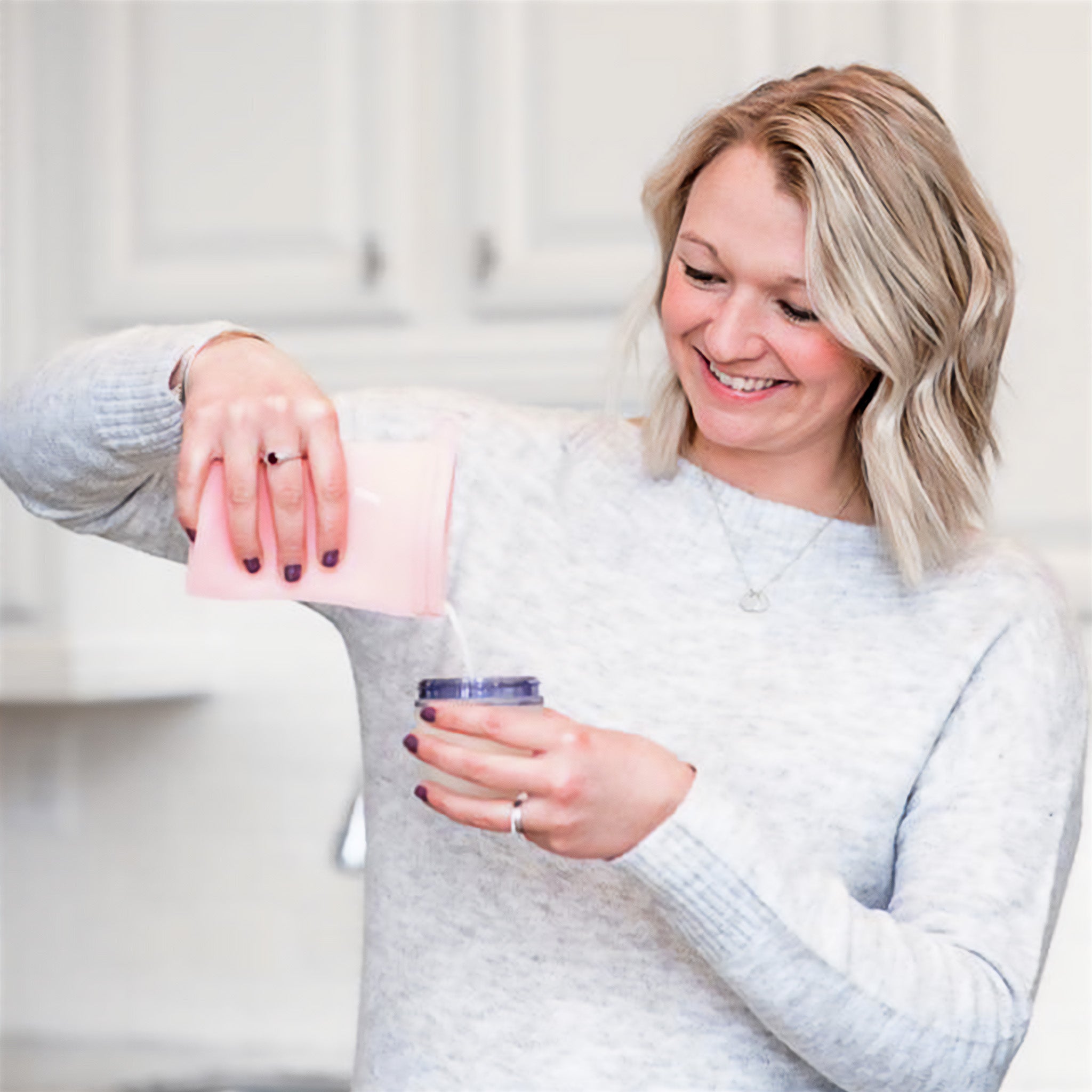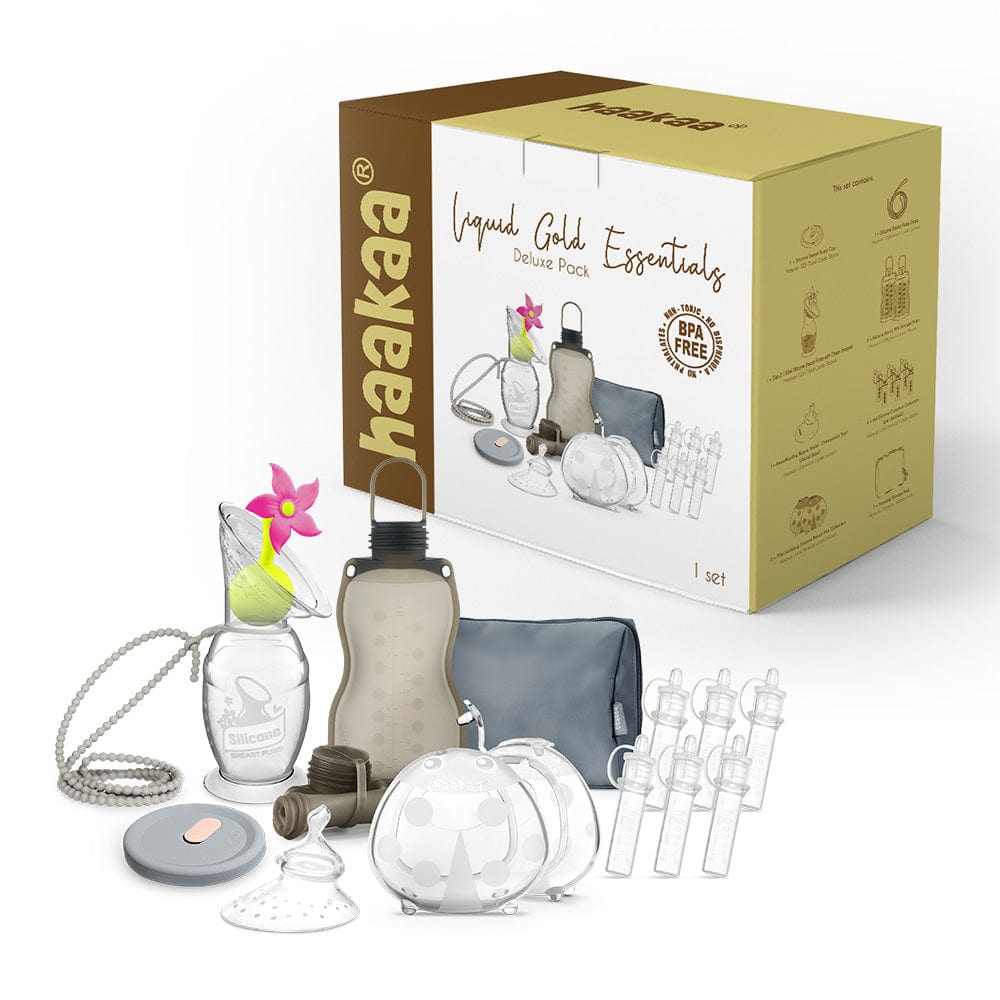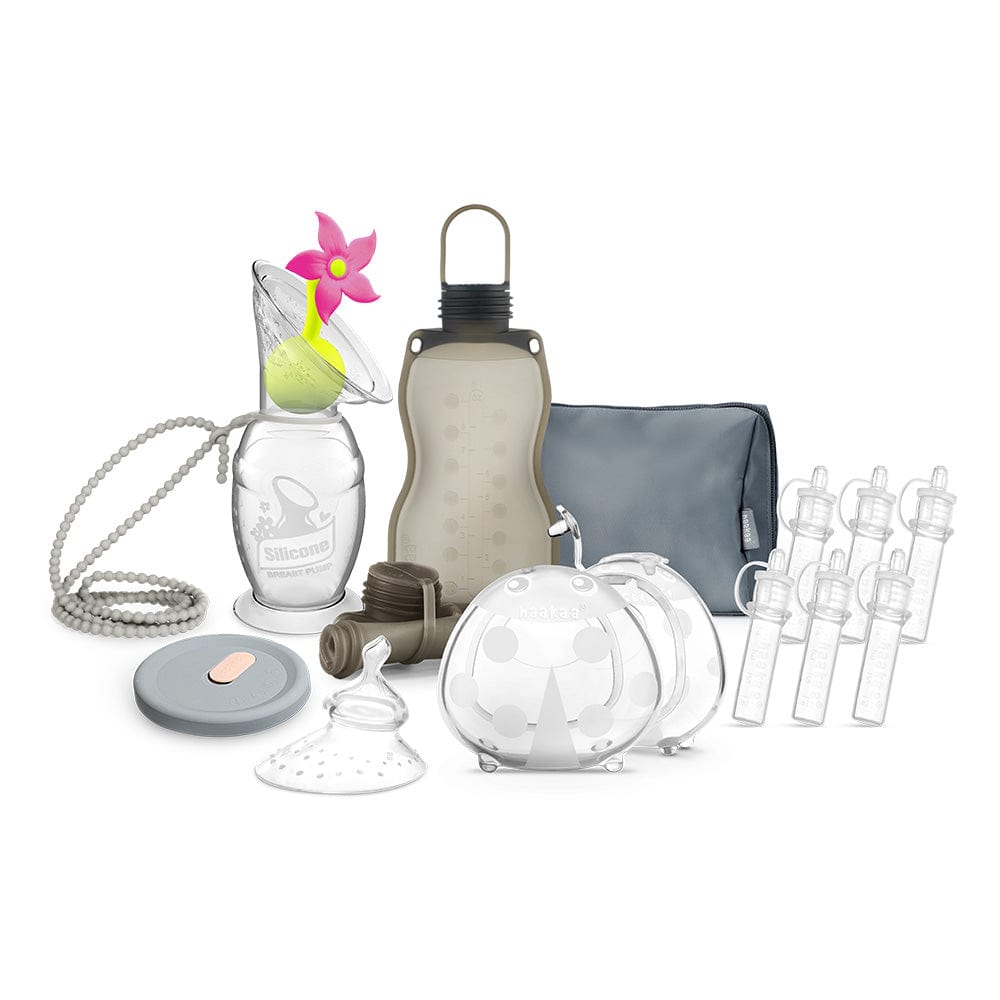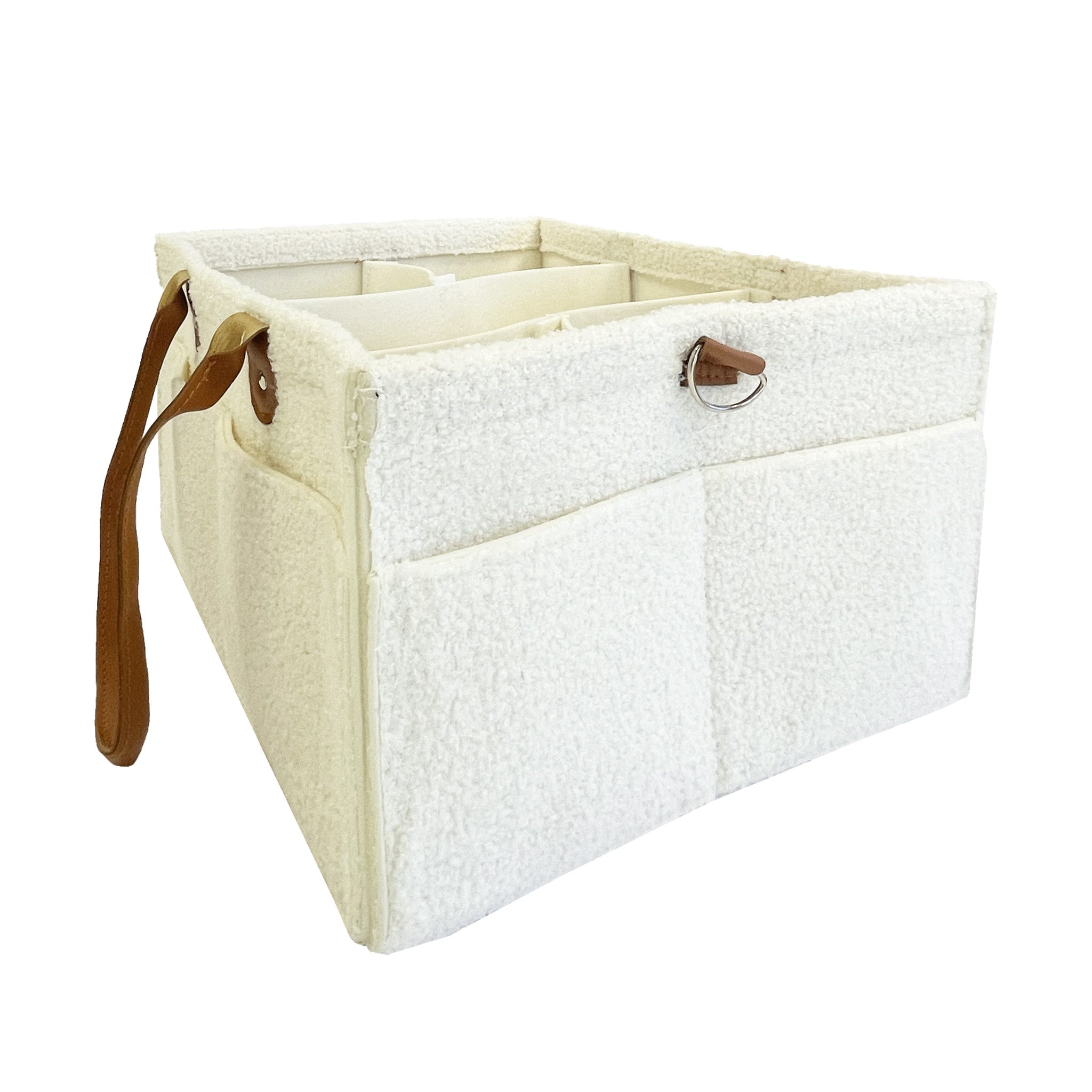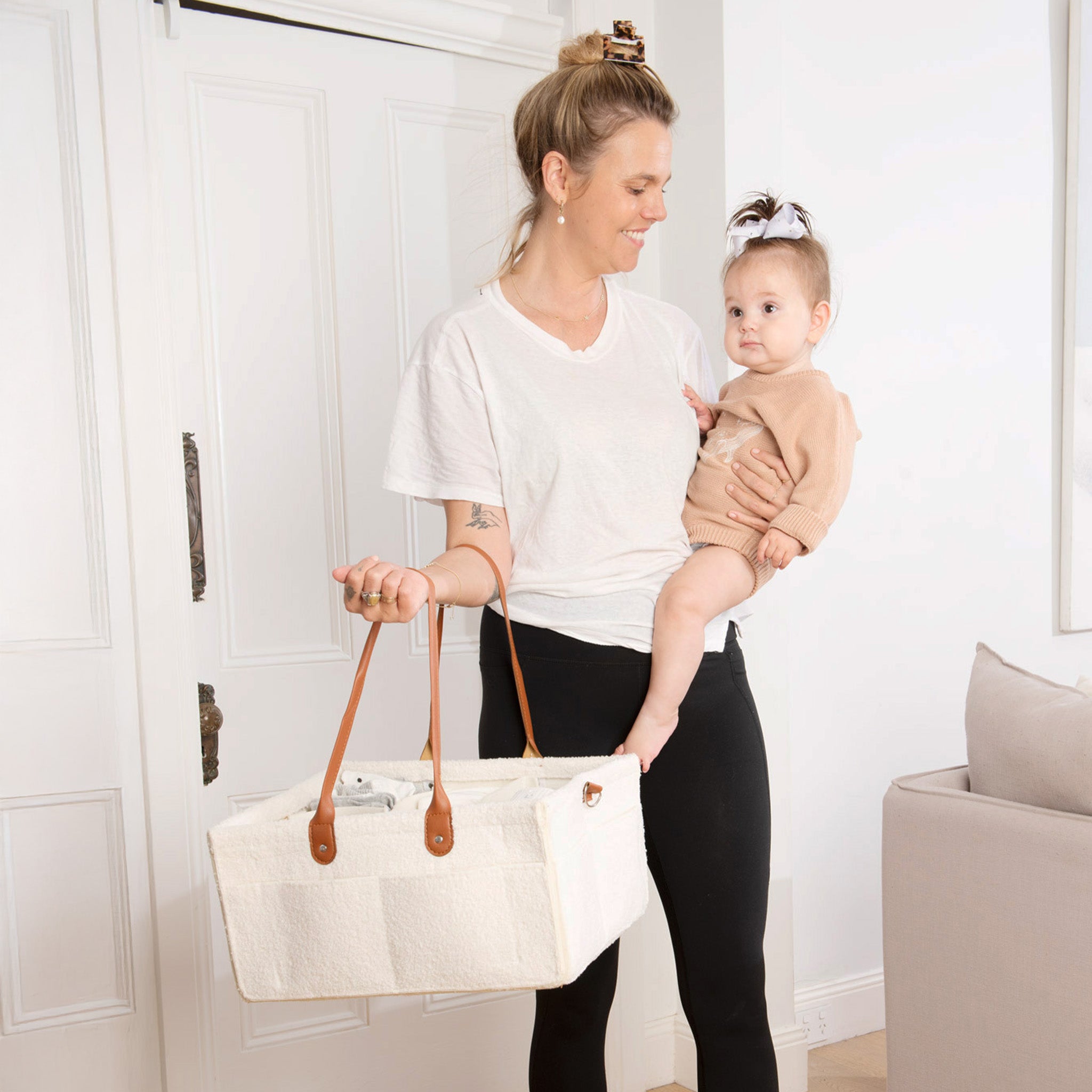So you’ve found out you’re having a C-section? Congratulations! This likely means that you’re nearing the home straight of pregnancy and bubba will soon be here!
Having a C-section, be it planned (or elective) or otherwise can seem very overwhelming. Maybe it wasn’t part of your initial birth plan or you’re unsure what to expect. But fear not mama, we’re here to help!
C-section or future C-section mamas, this one is for you!
What does a C-section actually involve?
A c-section of caesarean section is a surgical procedure that allows a baby to be delivered via an incision in your lower stomach. This method of delivery is decided on in consultation with your care team as the best way to ensure the safe arrival of your bub.
Planned/elective versus emergency
While the actual procedure is always the same, c-sections are usually divided into two categories: planned or elective and emergency.
A planned or elective c-section is one which has been decided on prior to labour and delivery. This could be for a variety of reasons including:
- The position of your baby (for example if bub is breech or lying sideways (traverse)
- You have placenta praevia, a condition where the placenta sits over the cervix, blocking your baby from exiting
- You are expecting twins and their positioning makes a c-section the safest option for delivery
- You are expecting more than two babies and their size or positioning makes a c-section the best option for delivery
- You have another medical or health condition or concern that means a vaginal delivery might be difficult or impossible
- You’ve had a previous c-section
A planned or elective c-section will be decided on in consultation with your care team who will guide you through the decision making process. You should always be involved in all decisions surrounding your care and delivery.
An emergency c-section is one that is not planned and that usually occurs once labour has started. Some reasons why an emergency c-section may occur include:
- Labour not progressing
- Your baby showing signs of distress during labour which requires them to be delivered quickly
- Your baby’s head not moving down or fitting through your pelvis
- Health concerns like your blood pressure rising or other issues that make vaginal delivery more of a risk.
- A Prolapsed umbilical cord (when the umbilical cord falls down through the cervix during labour)
If you need an emergency c-section, your care team will discuss this with you and your birthing partner and explain the reasoning behind their decision.
Being told you need a C-section can be very frightening when you weren’t otherwise prepared for it. Things can happen very fast during labour and you may not have time to process a lot of what is going on. Having trust in your care team and having your birth partner as an advocate can go a long way in helping to make the process as smooth as possible.
What happens during a c-section
Regardless of whether you have a planned or emergency c-section, the actual process itself will be quite similar.
- If you are having a planned C-section you will have been given an approximate time for your delivery and been given instructions for fasting as you generally need an empty stomach. If you’re having an emergency C-section the care team will ask when you last ate and drank.
- You will usually have some blood and other tests done prior to your anaesthetic.
- An anaesthetist will speak with you about the kind of anaesthetic they are going to use. This will usually be either an epidural or spinal anaesthetic. Both work to eliminate any pain.
An epidural involves a small plastic tube being inserted into the space around the lining of your spine. Anesthesia will then be injected through the tube. If you’ve been given an epidural to help with labour pain, this will usually be topped up before you’re taken into theatre for your c-section.
A spinal anaesthetic involves a needle being inserted between the bones of your spine and anaesthetic injected that way.
In a time sensitive emergency, a general anaesthetic may need to be used to get you into theatre as quickly as possible. This is generally only used in emergencies. - After the anaesthetic has been given, the delivery team will clean your stomach with antiseptic and cover it with sterile cloths to reduce the risk of infection.
- You will also have a catheter inserted into your bladder. This is a tiny plastic tube that allows your bladder to empty without you needing to actually wee or use the toilet!
- When the theatre and team are ready, you will be wheeled in to begin the process. Your support person will be scrubbed in and there to support you. You may feel some tugging and pulling sensations when the Obstetrician begins the delivery but you shouldn’t feel any pain. There will be a midwife or other nurse with you during the delivery for support and reassurance.
- A c-section usually takes between 30-60 minutes. Once the incision is made, your obstetrician will lift your baby out. Bub will usually be checked by the medical team before being given to you or your support person for skin to skin.
- Your placenta will be delivered while you’re enjoying your first snuggles and an injection given to encourage your uterus to start contracting and to minimise bleeding.
- Your obstetrician will then stitch the incision back together and apply a dressing before you are wheeled to recovery.
- Once ready, you will be moved to the postnatal ward. You may still be hooked up to a drip and have a catheter in for at least a few hours after birth. Your midwife/nurse will speak to you about this and how to manage it. Once you’re able to, you’ll likely be encouraged to get up and move around gently to minimise risk of blood clots and swelling.
What to take to hospital
A c-section usually requires a longer stay in hospital than a vaginal birth. You will also have some restrictions on your movements, especially straight after birth. Check out our comprehensive hospital bag packing list for an in-depth look at all the essentials. It’s also worth noting that you’ll likely need compression socks for the first few days after your c-section (which the hospital should provide but which you can purchase if you know you’re having a c-section). Many c-section mamas also recommend stocking up on ‘granny style’ knickers AKA super soft, high waisted knickers that will sit well about your incision. Hipster style undies will often sit right on your stitches which isn’t the most comfortable thing in the world!
Postpartum recovery
Recovery from a c-section is a different ball game to recovery from a vaginal birth. A c-section is major abdominal surgery and it’s likely you will feel that in the days and weeks afterwards. You will not be allowed to lift anything heavier than your newborn and will need to be careful with anything that puts any pressure on your c-section wound. Some women find compression wear helpful in offering support for their recovering muscles.
Your midwife or nurse will advise on what you need to do to keep your incision clean and to give it the best chance of healing quickly. It may become itchy or feel a bit numb, both of which are normal. Discharge, swelling, pain and/or an unpleasant smell should all be reported to your caregiver to rule out infection.
Seek out support when and where you can, especially if you have other children and for household chores. It’s super important to listen to your body and to give yourself time to heal properly. Resting can be tough with a newborn but try not to put too much pressure on yourself to ‘get back in action.’ Enjoy the newborn bubble while you can!
It can also be a great idea to consult with a women’s health physio in the weeks after birth. They can assess and advise on your pelvic floor health, incontinence issues, abdominal separation (diastasis recti) and other bladder and bowel issues. They can also discuss your return to everyday tasks like driving and lifting and also put a plan in place for returning to exercise.
Featured Product
The Lactivate New Mum Pack is designed to make your postpartum journey easier and more comfortable. Whether you're soothing sore nipples with our Silver Nursing Cups or freshening up "down there" with the Peri bottle - you'll have everything you need to survive (and thrive) as a new mum. Plus, you'll love our absorbent Nursing Pads and Breast Ice & Heat Pack for added relaxation. Transform your transition into motherhood with Lactivate!
For more breastfeeding resources and blogs, check out our resource section


